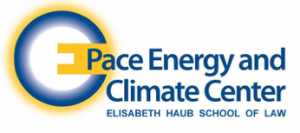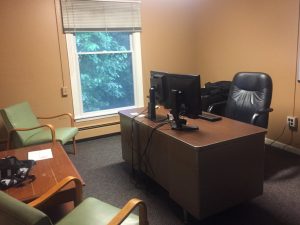
Less than two weeks after the conclusion of the spring semester at the Bard Center for Environmental Policy, I found myself gearing up for my first day of work at the Pace Energy and Climate Center in White Plains, NY. The Pace Energy and Climate Center is a not-for-profit project of the Elisabeth Haub School of Law at Pace University in White Plains, New York. The Center is dedicated to pragmatically promoting clean energy through research, analysis, and engagement with regulatory processes.
I was fortunate enough to bypass the typical internship process, and jump straight to full-time employment. It has been a trial by fire, but one for which I was well prepared. I’m still learning every day, and I am already growing immensely from my experience at Pace. In the short few weeks since I have started, I have taken on leadership and support roles on a wide array of projects.
CHP and Microgrids
A large aspect of Pace’s work centers around its role as the US Department of Energy’s Northeast CHP Technical Assistance Partnership. CHP, or combined heat and power, uses waste heat from fossil fuel electric generation to provide heat, greatly increasing efficiency and decreasing overall energy needs. I have been involved in gathering information about existing combined heat and power installations to create project profiles. These profiles will be used to show prospective developers a range of installations of similar size and market sector as their projects, complete with benefits and lessons learned.

The Center is also a consultant on the construction of a microgrid tied to the Empire State Plaza in Albany, NY. A microgrid is a self-contained electric grid that can operate independently in case of a power outage. The project would connect two convention centers and half a dozen governmental buildings to the Empire State Plaza, providing continued operation of government services and emergency shelter during an emergency.
Shaping Energy Markets
Another focus of the Pace Energy and Climate Center is participating in legal proceedings and providing comments on rulemaking decisions by utility regulatory commissions. In New York, we are funded by the Energy Foundation to be party to proceedings of Renewing the Energy Vision and the Clean Energy Standard. In Maryland, we are working with Earthjustice to represent Maryland Solar United Neighborhoods, Chesapeake Climate Action network, Fuel Fund of Maryland, and the Institute for Energy and Environmental Research as Maryland aims to modernize its electric grid with distributed renewables and smart metering.
New York
For New York, Pace is a member of the Clean Energy Organizations Collaborative (CEOC), along with Acadia Center, Citizens Campaign for the Environment, Environmental Advocates of New York, Natural Resources Defense Council, New York Public Interest Research Group, and Sierra Club. The Collaborative provides comments on alternative business models for utilities, which are drafted by the Department of Public Service and the utilities themselves. These new business models will help utilities adapt to the new costs and infrastructure needs of increased distributed renewable energy. Instead of only being able to profit on the dollar amount of installed infrastructure, the traditional utility rate model, earning adjustment mechanisms provide incentives to provide other services that promote and enable clean energy. These can include:
- Increases in energy efficiency, such as programs promoting efficient appliances, weatherization techniques, or efficient lighting upgrades to decrease total energy usage
- Decreases in energy intensity, which means lowering energy consumption for the same amount of economic activity in the commercial sector
- Decreases in peak electricity demand, lowering the maximum amount of electricity utilities need to supply at any one time
These metrics can be influenced by many external factors, and they can influence each other, so rigorous statistical models are being created to test the effectiveness of utility programs targeting these goals.
We are also working with Environmental Advocates of New York, Natural Resources Defense Council, Sierra Club, and The Nature Conservancy to help shape Phase II of New York’s Clean Energy Standard (CES). By providing comments on proposals from the Department of Public Service, we aim to ensure the future targets and policies of the Clean Energy Standard will be able to realistically meet its goal of 50% renewable power in New York by 2030.
Maryland
Earthjustice funds the Center to represent clients in Maryland’s modernization of its electric utility regulations. I am involved in particular with the implementation of pilot programs for time-of-use electricity billing. Issues of econometric analysis and experimental design are paramount in the implementation of the pilot programs. By designing rigorous pilots to test the impacts of time-of-use electric pricing, future state-wide policy on electric billing can be crafted without concerns about a lack of provable data.
Even more to come!

Since I started at Pace, I have attended a roundtable in Albany hosted by the Department of Public Service on providing renewable energy credits to re-powered renewable energy sources. I have also been given a leadership role on a contract from the Environmental Defense Fund to model emissions from backup generators in New York State.
Fortunately, my first year at Bard did an excellent job of preparing me for all of the aspects of my position. The rigorous training and hands-on experience I received in econometrics, cost-benefit analysis, stakeholder engagement, and communication have all seen daily use in my work at Pace.
I’m excited to see where these projects, and the rest of my career at Pace, take me.
